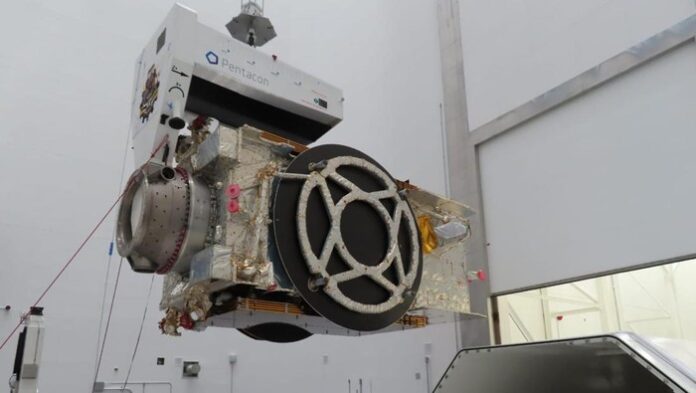
The launch of the Republic of Indonesia’s satellite, Satria-1, on Monday (19/6/2023) at 05:21 AM Western Indonesia Time, or Sunday (18/6/2023) at 18:21 Florida time, marked a momentous achievement. The satellite, renowned as the largest in Southeast Asia and the fifth largest globally, embarked on its journey from Cape Canaveral, Florida, propelled by SpaceX’s Falcon 9 rocket. Its destination: orbit 146 degrees East, positioned gracefully above the captivating skies of Papua.
The orbital process of Satria-1 unfolded in two meticulously planned stages. During the initial phase, the launch progressed seamlessly, with the first booster successfully detaching itself and the Falcon 9 returning to Earth in a flawless landing, showcasing the exceptional prowess of SpaceX’s engineering and technological prowess.
Transitioning into the second stage, Satria-1 continued its voyage, propelled by the second booster, steadfastly advancing towards its designated orbit. This significant milestone in Indonesia’s space exploration journey set the stage for enhanced connectivity, as the satellite’s primary objective is to cater to the internet needs of various public facilities, particularly in the remote, underdeveloped, and far-flung regions of the nation, commonly referred to as the 3T regions.
In line with the satellite’s purpose, the Ministry of Communication and Information Technology (Kemenkominfo) outlined its plans to optimize Satria’s services. One of the key measures involves streamlining the total number of service points provided by the Satria satellite.
Previously encompassing a vast network of 150,000 service points, Kemenkominfo intends to reduce this number to approximately 50,000 points. This strategic decision aims to maintain the optimal performance and efficiency of the Satria satellite, ensuring that the increased demands of the users are effectively met.
Elaborating on this development, Usman Kansong, the Director-General of Public Information and Communication at the Ministry of Communication and Information Technology, shed light on the rationale behind the reduction in service points.
He emphasized the evolving internet requirements, stating, “As we assess the current needs, it is evident that the demand has surpassed the previous capacity of 1 Mbps per point. The increased need per point now exceeds 4 Mbps.
Consequently, we believe that a more rational approach would involve focusing on approximately 50,000 service points. This will enable us to provide enhanced connectivity and fulfill the growing demands of the users across the nation.”
The successful launch of Satria-1 and the subsequent optimization of its services align with Indonesia’s commitment to advancing its technological infrastructure and bridging the digital divide.
This monumental feat brings the nation closer to achieving its connectivity goals, ensuring that even the most remote regions can benefit from improved internet access. As Indonesia forges ahead in its pursuit of technological advancements, Satria-1 stands tall as a symbol of progress, empowering the nation and enabling its citizens to participate fully in the digital age.






















